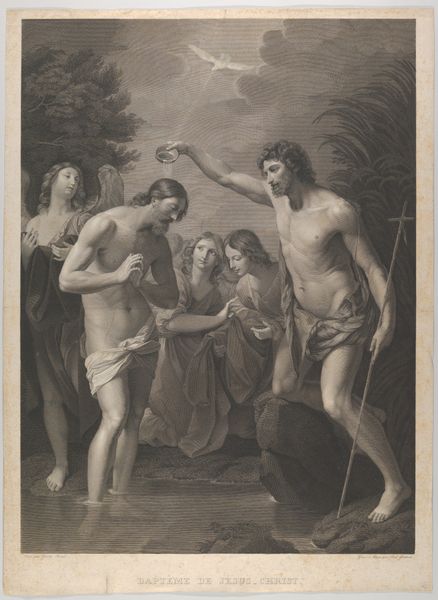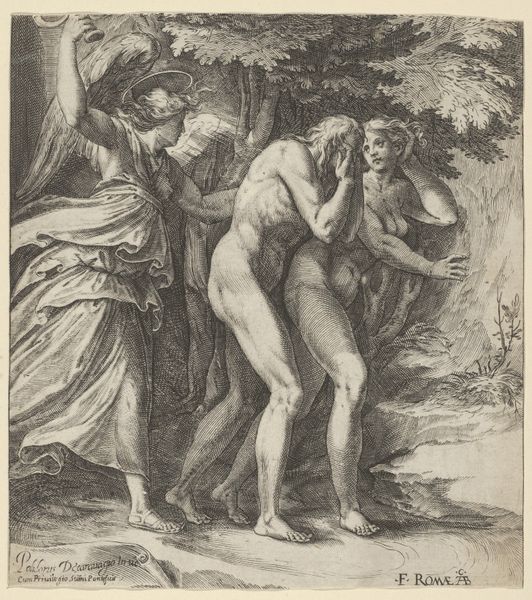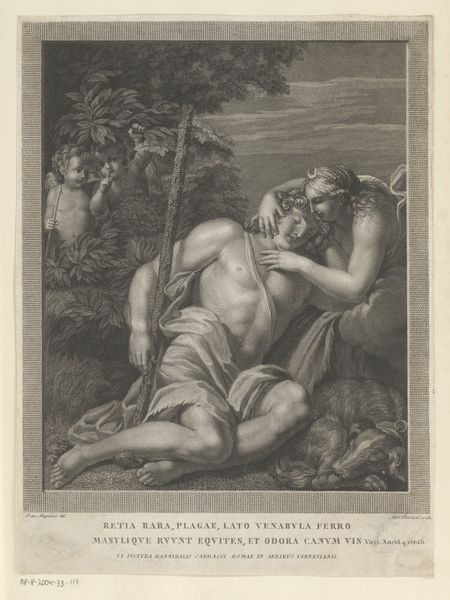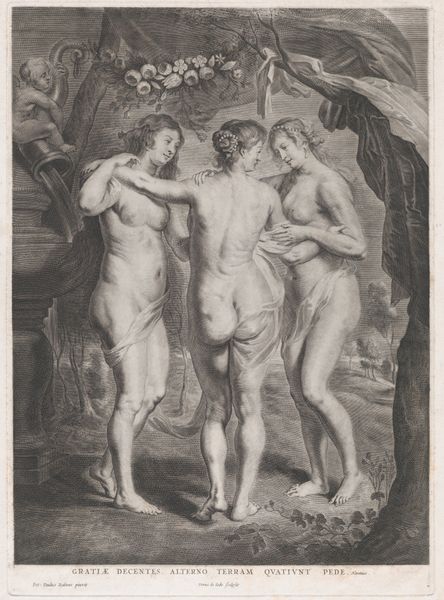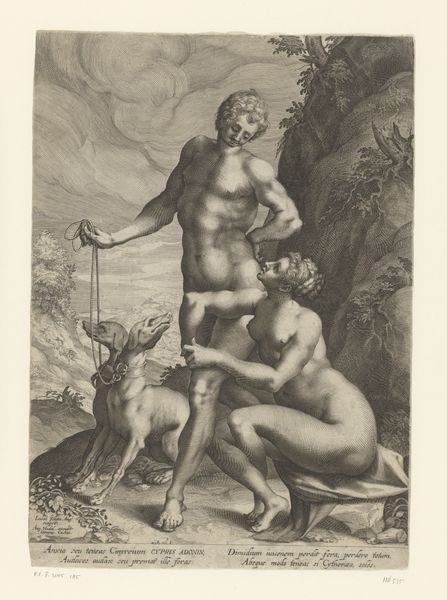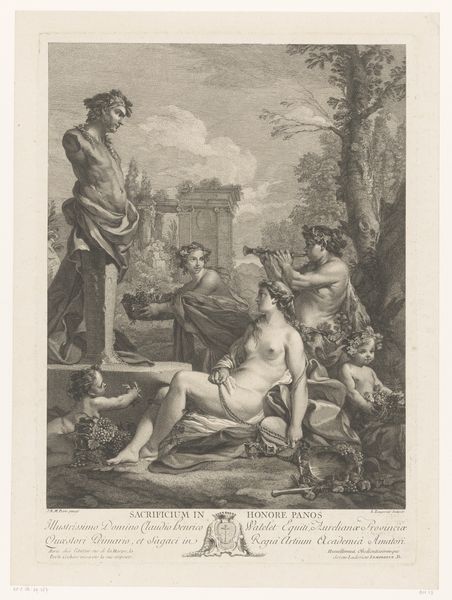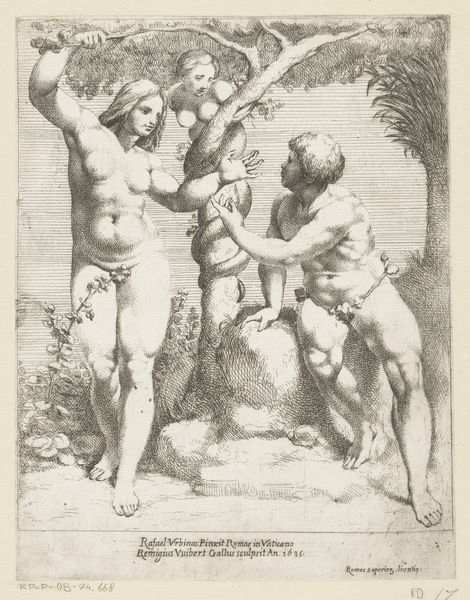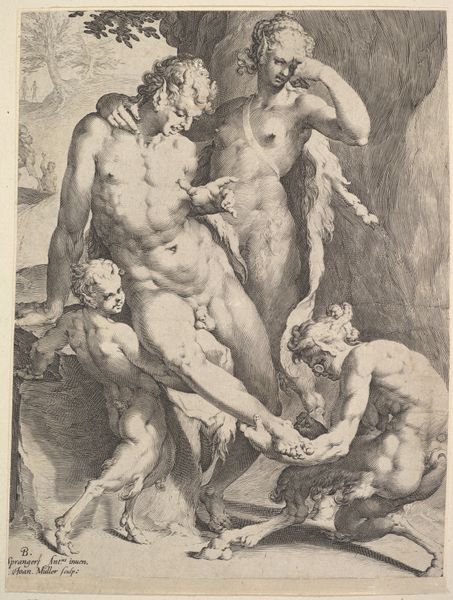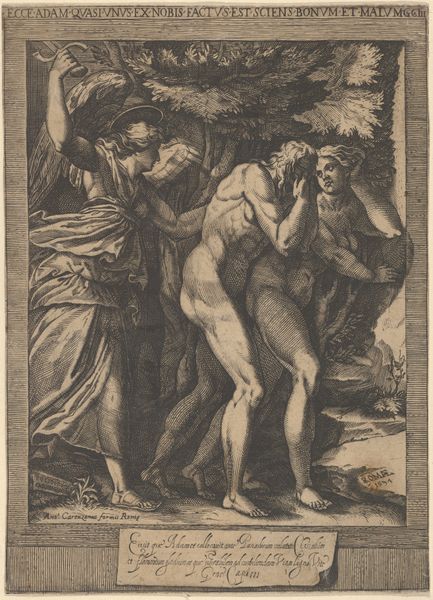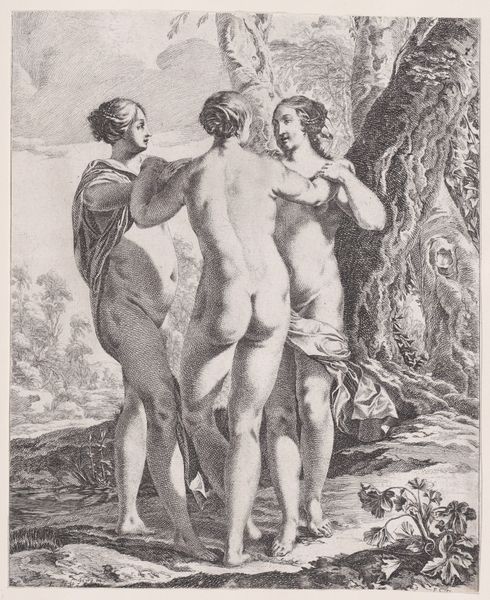
Dimensions: height 436 mm, width 320 mm
Copyright: Rijks Museum: Open Domain
Curator: Here we have Edward Fisher’s engraving, "Man Playing Flute Before Two Dancing Nymphs," dating to 1776 or 1777. My initial impression is one of pastoral serenity; there's an undeniable grace in the figures' movements. Editor: Engravings like this played a crucial role in disseminating visual culture in the 18th century. Consider the social function: How many people had access to original oil paintings? Prints like this made art available to a much wider audience, creating new markets and consumption habits around imagery. It is interesting to observe what images become important in social culture. Curator: True, and Fisher’s skill in manipulating line to create tonal variations is quite evident here. Look at how he renders the musculature of the flutist compared to the softer flesh of the nymphs. There's also a visible element of labor; each line meticulously placed using metal tools. This wasn’t a quick, gestural work. Editor: Absolutely. And it speaks volumes about the social and institutional frameworks. Fisher published this himself at "The Golden Head," suggesting a degree of entrepreneurialism— controlling both the creation and distribution. Who were his target consumers? What kind of domestic space was this designed to adorn? The artwork has many ties to London society as well. Curator: Good questions. Considering the classical subject matter, the piece seems calculated to appeal to an educated, probably affluent, audience—the "Golden Head" being well located in London society. But notice the tension between high art aspirations and the reproductive medium of printmaking. It complicates conventional categories. This is a labor-intensive replica sold to a wider audience for an elite purpose. Editor: That's precisely what I'm getting at. These prints blur the boundaries of fine art. The medium's role cannot be understated as art, consumerism and business became interconnected. Its cultural work included shaping understandings of class, taste, and access to visual representation itself. It’s a dialogue between production and interpretation in that way. Curator: Fascinating how an engraving can open a window onto complex intersections of class and craft. It invites us to reflect upon how we place value on both making and consuming art, now just as much as in the 18th Century. Editor: It certainly makes you consider art and accessibility and the power held behind distribution to reach society.
Comments
No comments
Be the first to comment and join the conversation on the ultimate creative platform.
